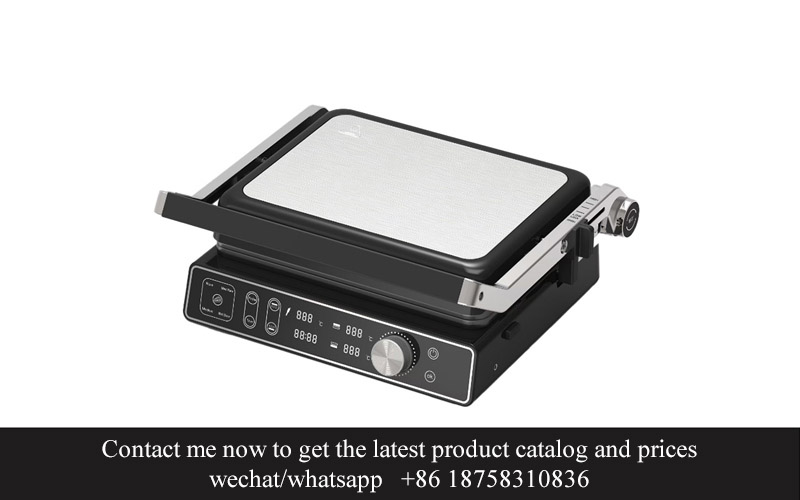Address
304 North Cardinal
St. Dorchester Center, MA 02124
Work Hours
Monday to Friday: 7AM - 7PM
Weekend: 10AM - 5PM
Address
304 North Cardinal
St. Dorchester Center, MA 02124
Work Hours
Monday to Friday: 7AM - 7PM
Weekend: 10AM - 5PM

As we delve into the world of kitchenware, it’s fascinating to observe how the industry is constantly evolving, driven by consumer demands and technological advancements. The journey from traditional cookware to modern, innovative designs is not just a reflection of changing tastes but also a testament to the industry’s adaptability. Today, we’re focusing on how BSCI audited factories are setting the new standard in kitchenware production, ensuring quality, sustainability, and consumer satisfaction.
The European and American markets have witnessed a remarkable surge in the demand for kitchenware over recent years. This upward trend can be attributed to several key factors that have reshaped the landscape of culinary accessories and appliances.
Culinary Culture EvolutionCulinary traditions in both Europe and the Americas have evolved significantly, with a growing emphasis on home cooking and culinary exploration. From gourmet chefs hosting dinner parties to everyday households embracing healthier eating habits, the need for high-quality kitchenware has surged. This cultural shift has created a fertile ground for innovative kitchenware products that cater to a diverse range of cooking styles and preferences.
Technological AdvancementsThe integration of technology into kitchenware has been a game-changer. Smart appliances, eco-friendly materials, and user-friendly designs have become the norm, appealing to tech-savvy consumers who seek efficiency and convenience. The rise of kitchenware with integrated connectivity, such as Bluetooth-enabled cookware that syncs with mobile devices, has further propelled the market’s growth.
Health and Wellness FocusAs health consciousness becomes increasingly prevalent, consumers are gravitating towards kitchenware that supports healthier lifestyles. Non-stick coatings, BPA-free plastics, and materials that enhance the nutritional value of food are becoming more popular. This focus on wellness has spurred the development of kitchenware that not only performs well but also aligns with health-conscious values.
Sustainability and Eco-Friendly PracticesThe environmental impact of consumer goods is a major concern for many. European and American consumers are increasingly looking for kitchenware that is sustainable and eco-friendly. This has led to a surge in demand for products made from recycled materials, biodegradable plastics, and sustainable resources. Companies that prioritize sustainability are gaining a competitive edge in the market.
Globalization and Cross-Cultural InfluenceGlobalization has brought diverse culinary influences into the homes of European and American consumers. Asian-inspired cookware, Mediterranean ceramics, and European stainless steel appliances are all part of the market’s diverse offerings. This cross-cultural exchange has enriched the kitchenware landscape and expanded consumer choices.
Market DiversificationThe kitchenware market is no longer limited to traditional cookware. There is a growing segment for specialty items like high-end coffee makers, professional-grade blenders, and gourmet food processors. This diversification has allowed manufacturers to cater to niche markets and offer a wider range of products to satisfy varying consumer needs.
Online Retail and Direct-to-Consumer ModelsThe rise of online retail and direct-to-consumer (DTC) models has transformed the way kitchenware is sold. Consumers now have access to a vast array of products from around the world, with the convenience of shopping from the comfort of their homes. This shift has also opened up opportunities for emerging brands to reach a global audience without the need for traditional retail partnerships.
Influencer Marketing and Social MediaInfluencer marketing and social media have become powerful tools for kitchenware brands. Platforms like Instagram, YouTube, and TikTok are filled with culinary enthusiasts and influencers showcasing their favorite kitchenware products. This form of marketing has a significant impact on consumer purchasing decisions, as it provides a personal touch and relatable reviews.
Economic Growth and Consumer ConfidenceThe economic recovery in both Europe and the Americas has led to increased consumer confidence. As people’s disposable incomes rise, they are more willing to invest in quality kitchenware that enhances their cooking experience. This economic backdrop has contributed to the robust growth of the kitchenware market.
Continuous Innovation and Product DevelopmentThe kitchenware industry is characterized by a constant drive for innovation. Companies are continuously developing new materials, designs, and functionalities to keep up with consumer demands and market trends. This relentless pursuit of improvement ensures that the market remains dynamic and ever-evolving.
In conclusion, the rise of kitchenware in the European and American markets is a multifaceted phenomenon driven by cultural shifts, technological advancements, health and sustainability concerns, and the global exchange of culinary ideas. As the market continues to grow, it is poised to offer even more exciting and innovative products that cater to the evolving needs of consumers.

BSCI audited factories have emerged as a beacon of quality and sustainability within the kitchenware industry. These facilities undergo rigorous scrutiny to ensure they meet the highest standards of ethical labor practices and environmental responsibility. Here’s a closer look at what makes these factories a benchmark in the sector.
The BSCI (Business Social Compliance Initiative) is a leading program that sets a precedent for ethical manufacturing across various industries, including kitchenware. By adhering to the BSCI guidelines, factories demonstrate their commitment to human rights, fair labor, and environmental stewardship. This certification is not just a mark of compliance; it’s a promise to consumers that their kitchenware is produced with the utmost care for workers and the planet.
One of the key aspects of BSCI audited factories is their dedication to fair labor practices. This includes ensuring that employees are paid a living wage, work reasonable hours, and have the right to join unions. The factories also prioritize the health and safety of their workforce, providing adequate training and a safe working environment. Such practices not only enhance the reputation of the factory but also contribute to the overall well-being of the community.
Sustainability is another cornerstone of BSCI audited factories. These facilities are conscious of their environmental footprint and strive to minimize waste, conserve energy, and reduce emissions. They often employ green technologies and materials that are recyclable or biodegradable, ensuring that the kitchenware they produce is eco-friendly. This commitment to sustainability resonates with environmentally conscious consumers who are increasingly seeking out products that align with their values.
Quality control is paramount in BSCI audited factories. The certification requires that products meet strict quality standards, ensuring that every item that leaves the factory is of the highest caliber. From the raw materials used to the final assembly, these factories adhere to a meticulous quality assurance process. This attention to detail translates into kitchenware that is not only durable but also aesthetically pleasing and functional.
The transparency of BSCI audited factories is also a significant factor. These facilities are open about their manufacturing processes, allowing for regular audits and inspections by independent third parties. This transparency builds trust with consumers, suppliers, and stakeholders, as it shows a clear commitment to accountability and continuous improvement.
Another aspect that sets BSCI audited factories apart is their focus on diversity and inclusion. These factories understand that a diverse workforce contributes to a more innovative and creative environment. They actively promote diversity and provide equal opportunities for all employees, regardless of gender, ethnicity, or background.
In the kitchenware industry, BSCI audited factories often lead the way in product innovation. They invest in research and development to create cutting-edge designs and functionalities that cater to the evolving needs and preferences of consumers. This commitment to innovation means that the products coming out of these factories are not just good; they’re great.
The global reputation of BSCI audited factories is well-earned. Their commitment to quality, sustainability, and ethical manufacturing has positioned them as leaders in the kitchenware sector. As more consumers seek out responsibly produced goods, these factories are at the forefront, offering a wide range of kitchenware products that not only perform well but also make a positive impact.
The success of BSCI audited factories can be attributed to their relentless pursuit of excellence. They understand that maintaining their certification requires ongoing vigilance and improvement. This dedication ensures that every aspect of their operations, from the sourcing of materials to the final distribution of products, is carried out with integrity and care.
In conclusion, BSCI audited factories have become synonymous with quality and sustainability in the kitchenware industry. Their adherence to the BSCI standards not only protects the rights of workers but also preserves the environment for future generations. As the demand for ethical and eco-friendly products grows, these factories are poised to remain at the forefront, shaping the future of kitchenware manufacturing.

In recent years, the kitchenware industry has seen a surge in innovation, with designers and manufacturers pushing the boundaries of what’s possible in kitchen gadgets and utensils. These creative designs are not just about aesthetics; they are engineered to enhance functionality, ease of use, and, in many cases, sustainability. Here’s a glimpse into the world of kitchenware that’s capturing the market’s attention.
Smart appliances are becoming increasingly common, and kitchenware isn’t immune to this trend. From induction cooktops that adjust to the pot’s size to smart toasters that can connect to your phone, the fusion of technology and kitchenware is revolutionizing how we interact with our cooking tools. These gadgets are not just a convenience; they’re a testament to how far innovation has come in making kitchen life more efficient.
The rise of eco-friendly materials has led to a wave of sustainable kitchenware. From bamboo cutting boards to stainless steel straws and reusable silicone containers, consumers are increasingly seeking products that reduce their carbon footprint. These designs often feature minimalist aesthetics and are built to last, appealing to environmentally conscious buyers who want to make a difference with every purchase.
Functional designs that solve everyday problems are also making waves. Imagine a knife that automatically sharpens itself or a spatula with a built-in whisk. These innovations are not just novel; they streamline cooking processes and can be a game-changer for busy chefs or those who simply prefer a kitchen that’s as intuitive as it is efficient.
Interactive kitchenware that offers educational value is another area where creativity is flourishing. There are scales that can tell you the exact nutritional content of your ingredients, smart pans that can suggest recipes based on what’s in your fridge, and even kitchen gadgets that can teach you new cooking techniques. These products are not just tools; they are companions that help enhance the cooking experience.
The kitchen is also seeing a surge in personalized kitchenware. From customizable kitchen gadgets with engraved names to cookware sets that come in a variety of colors and patterns, consumers are looking for items that reflect their personal style. This customization extends beyond just the appearance, with some brands offering adjustable designs that can cater to the unique preferences of different users.
Safety and convenience are paramount in the design of modern kitchenware. There are cutting boards with anti-slip bases, non-stick cookware with ergonomically designed handles, and kitchen utensils that can be easily cleaned and stored. These considerations are not just about user experience; they’re about making cooking safer and more accessible for everyone.
The integration of modern kitchenware with the home’s smart systems is also a growing trend. From smart ovens that can be controlled with a voice assistant to refrigerators that can order groceries when you’re running low, these interconnected devices are transforming the kitchen into a hub of home automation.
The art of cooking is evolving, and with it, so is the way we think about kitchenware. These innovative designs are not just about making cooking easier; they’re about making it a more enjoyable, efficient, and personalized experience. Whether it’s through the clever integration of technology, the use of sustainable materials, or the creation of tools that solve real-world problems, kitchenware innovation is catching the market’s eye and reshaping the way we cook and live.

In the competitive landscape of the kitchenware industry, BSCI certification plays a pivotal role in setting a high standard for quality and ethical manufacturing practices. This certification, which stands for Business Social Compliance Initiative, has become a recognized mark of excellence, offering a comprehensive framework for ensuring that products are not only functional but also socially responsible.
The BSCI certification process involves rigorous assessments that cover labor rights, working conditions, health and safety, and environmental practices. For kitchenware manufacturers, achieving this certification means undergoing thorough evaluations of their supply chains, ensuring that every aspect of production adheres to the highest ethical standards.
One of the key benefits of BSCI certification in the kitchenware industry is the assurance it provides to consumers. With kitchenware being a staple in everyday life, consumers are increasingly conscious of the origin and impact of the products they purchase. A BSCI-audited kitchenware product carries with it the promise that the items are crafted without compromising on the well-being of workers or the environment.
Moreover, BSCI certification can serve as a competitive advantage for manufacturers. As more consumers seek out ethically produced goods, having the BSCI label can attract a loyal customer base that values social responsibility. This is particularly true in the European and American markets, where consumers are particularly sensitive to the sustainability and ethicality of the products they buy.
For manufacturers, the certification process is not without its challenges. It requires a significant investment in time and resources to ensure that all aspects of the supply chain meet the BSCI standards. This includes not only the direct manufacturing processes but also the sourcing of raw materials and the treatment of workers across the entire production journey.
The BSCI audit often uncovers areas for improvement within the supply chain. For kitchenware manufacturers, this might mean overhauling production methods to reduce waste, ensuring fair wages for workers, or adopting more sustainable materials. By addressing these issues, manufacturers not only meet the BSCI criteria but also often improve their overall business operations.
In the realm of innovation, BSCI certification can also drive the development of new kitchenware products. Knowing that their products will be scrutinized for ethical production, manufacturers are motivated to create designs that are not only aesthetically pleasing but also functional and sustainable. This has led to a surge in eco-friendly kitchenware, such as products made from recycled materials or designed to be fully compostable.
The certification also fosters transparency. By making the audit process public, BSCI allows customers and stakeholders to verify the ethical claims made by manufacturers. This level of accountability is crucial in an industry where claims of ethical production can sometimes be misleading.
In the kitchenware industry, the presence of BSCI certification is a testament to a manufacturer’s commitment to social and environmental responsibility. It signifies that the products are not just crafted with precision but also with a deep respect for the people and planet that are part of the production process.
The impact of BSCI certification extends beyond the immediate products. It influences the entire market, encouraging other players to raise their standards and adopt similar practices. As more companies embrace BSCI certification, the industry as a whole benefits from a more sustainable and socially conscious approach to manufacturing.
Ultimately, BSCI certification in the kitchenware industry is more than just a label; it’s a symbol of a manufacturer’s dedication to quality, ethical practices, and the well-being of its workforce. It’s a trust signal that consumers seek, and one that can differentiate brands in a crowded marketplace.

In the ever-evolving landscape of kitchenware, understanding consumer preferences is crucial for brands aiming to stay ahead. Data-driven insights have become the compass guiding manufacturers and designers toward creating products that resonate with their target audience. Here’s a glimpse into how these insights are shaping the kitchenware industry.
Consumer habits are shifting rapidly, influenced by a myriad of factors including technological advancements, lifestyle changes, and environmental concerns. Smart appliances, for instance, are becoming increasingly popular, reflecting a trend towards convenience and efficiency. These insights are not just limited to the adoption of new technologies but also extend to the materials used in kitchenware.
Materials play a pivotal role in consumer preferences. There’s a growing demand for eco-friendly and sustainable options, with consumers gravitating towards products made from recycled materials or those that are biodegradable. This shift is evident in the rise of bamboo, stainless steel, and ceramic cookware, all of which are perceived as healthier and more environmentally responsible choices.
Color and design also play a significant part in consumer decisions. Bright, bold colors are making a comeback, offering a playful and vibrant alternative to the traditional neutral palettes. The kitchen, once a utilitarian space, is now a canvas for personal expression, and kitchenware is following suit. Patterns and textures are being used to add character and style to everyday cooking tools.
Another crucial insight is the rise of multifunctionality. Consumers are looking for kitchenware that can do more than one thing, reducing clutter and simplifying their lives. This is seen in the popularity of cookware sets that can be used on various heat sources, from induction cooktops to open flames, and in the design of kitchen gadgets that serve multiple purposes, like a spatula that can also be used as a whisk.
Ease of use is another key factor. Modern kitchenware is not just about aesthetics; it’s about functionality. Innovations such as non-stick coatings, ergonomic handles, and intuitive designs are making cooking more accessible to all skill levels. Brands that invest in user-friendly features are likely to capture a broader market share.
Health and safety are paramount in kitchenware design. Consumers are more aware of the potential risks associated with certain materials and coatings, leading to a preference for products that are free from harmful chemicals. This has spurred the development of non-toxic cookware options, which are not only safer but also align with the broader movement towards wellness.
The role of social media and online reviews cannot be overstated. Today’s consumers are highly informed and influenced by peer recommendations. They turn to platforms like Instagram, YouTube, and Amazon to gather information and make purchasing decisions. Data-driven insights help brands understand which products are trending, what features are most appreciated, and how to leverage social media to reach their audience effectively.
Personalization is another trend that is shaping consumer preferences. Customizable kitchenware, such as cookware with personalized engravings or kitchen gadgets that can be customized to specific needs, is appealing to consumers who want their kitchenware to reflect their individuality.
Lastly, the importance of sustainability cannot be ignored. Consumers are not just looking for products that are sustainable in their production but also in their use and disposal. Brands that offer recycling programs or provide information on how to properly dispose of their products are gaining trust and loyalty.
In conclusion, data-driven insights are providing a clear picture of the changing consumer landscape in the kitchenware industry. By understanding these preferences, manufacturers can develop products that not only meet the needs of their customers but also anticipate future trends. The data-driven approach ensures that kitchenware remains not just a necessity but a reflection of the modern consumer’s values and aspirations.

In today’s fast-paced kitchenware industry, staying ahead of market dynamics is crucial for manufacturers and retailers. Understanding these trends not only helps in developing innovative products but also ensures that businesses remain competitive. Here’s a deeper dive into the current market dynamics shaping the kitchenware landscape:
The rise of smart kitchen appliances has revolutionized the industry, with consumers increasingly seeking products that offer convenience and connectivity. Smart cookers, coffee makers, and refrigerators are just a few examples of how technology has merged with everyday kitchen tools. This shift has prompted manufacturers to focus on integrating advanced features without compromising on design or functionality.
A growing focus on sustainability is another trend reshaping the market. Consumers are more conscious of the environmental impact of their purchases, leading to a surge in demand for eco-friendly kitchenware. Biodegradable materials, energy-efficient appliances, and products designed for longevity are becoming more popular, reflecting a broader commitment to sustainability throughout the supply chain.
The kitchenware market is becoming more diverse, with a broader range of products catering to various dietary preferences. As plant-based diets gain traction, there’s a surge in demand for kitchenware that’s suitable for vegan and vegetarian cooking. Additionally, the rise of home chefs has led to an increased interest in specialty items like professional-grade blenders, mixers, and smokers.
Urbanization has played a significant role in the market dynamics, with a shift towards compact and multi-functional kitchenware. City dwellers often have limited space, so they seek products that can serve multiple purposes. From collapsible cutting boards to multifunctional cookware sets, these space-saving innovations are meeting the needs of a mobile, urban population.
Customization and personalization are also emerging as key trends. Consumers are looking for products that reflect their individual tastes and cooking styles. This has led to a rise in custom designs, including personalized engravings on kitchen gadgets and appliances. Companies that can offer bespoke solutions are finding a niche market segment that values uniqueness and personal touch.
Globalization has expanded the market’s reach, with cross-cultural influences leading to a fusion of culinary styles in kitchenware design. International flavors are blending into the local markets, creating a rich tapestry of global inspiration in kitchenware. This cultural exchange has spurred innovation and creativity, as manufacturers and designers look to blend traditional techniques with modern materials.
E-commerce has transformed how consumers shop for kitchenware. Online marketplaces offer a vast array of products at competitive prices, often with the convenience of doorstep delivery. This shift has forced traditional retailers to adapt, with many embracing omnichannel strategies that blend online and physical shopping experiences.
Finally, the importance of brand storytelling cannot be overstated. Consumers are not just purchasing kitchenware; they are investing in a lifestyle and a brand’s values. Brands that can effectively communicate their story and mission are more likely to resonate with customers, fostering loyalty and repeat business.
The kitchenware industry is dynamic, with a myriad of trends and consumer preferences shaping the market. By staying informed and adaptable, businesses can capitalize on these changes, ensuring they remain at the forefront of the ever-evolving culinary landscape.

In recent years, the kitchenware industry has seen a surge in demand, with consumers seeking not just functional pieces but also those that reflect their personal style and values. Among the many factors influencing this trend, BSCI-audited factories have played a pivotal role, producing kitchenware products that are not only high in quality but also resonate with modern consumer preferences.
One such case study is the “EcoChef” collection, developed by a BSCI-certified factory. This line of cookware stands out for its sleek, minimalist designs and eco-friendly materials. The use of recycled stainless steel and BPA-free plastics has attracted environmentally conscious consumers, who appreciate the product’s longevity and health benefits. The EcoChef brand has become synonymous with sustainable living in the kitchen.
Another notable success story is the “SmartGourmet” series, a range of smart kitchen appliances that have changed the game for tech-savvy chefs. The line includes a programmable oven, an induction cooktop with temperature control, and a built-in recipe database. These features have not only made cooking more convenient but also have allowed for precise and consistent results. The BSCI audit ensured that the factory’s production process adhered to the highest standards of quality and worker welfare.
The “UrbanChef” collection, yet another hit from a BSCI-audited factory, caters to the urban dweller who desires a compact yet high-quality kitchen setup. The products are designed to maximize space, with foldable tables, magnetic knife holders, and multi-purpose cookware. The sleek, modern designs have found a market among those who value both style and efficiency. The factory’s commitment to ethical practices and fair labor conditions has bolstered the brand’s reputation.
In the realm of kitchen gadgets, the “CulinaryCraze” brand has seen remarkable success with its innovative line of kitchen tools. From the “SpatulaSleek” with its ergonomic handle and non-stick coating to the “MixMasterPro” blender with its smart touch controls, these products have become must-haves for culinary enthusiasts. The BSCI audit has been instrumental in maintaining the brand’s commitment to innovation without compromising on safety or sustainability.
The “GourmetGuru” collection by a BSCI-certified manufacturer has redefined luxury kitchenware. Handcrafted from premium materials like forged aluminum and ceramic, these products are not just functional but also serve as works of art. The attention to detail, from the intricate patterns on the handles to the precise craftsmanship, has won over consumers looking for an upgrade to their kitchenware. The factory’s adherence to the BSCI standards ensures that every piece meets the highest quality and safety benchmarks.
One cannot overlook the “FamilyChef” line, which has become a staple in many homes. Designed with families in mind, these kitchen tools are durable, easy to clean, and versatile. The “SafeServe” cutting board, for instance, has a non-slip base and is made from a durable, bacteria-resistant material. The “NutriBlender” offers parents a way to prepare nutritious smoothies for their children with ease. The BSCI certification has helped maintain the factory’s focus on creating products that are not only functional but also safe for all members of the family.
The success of these BSCI-audited kitchenware products is a testament to the power of combining quality, innovation, and social responsibility. By adhering to the BSCI standards, these factories have been able to produce products that not only catch the market’s eye but also earn the trust and loyalty of consumers who value these attributes. As the kitchenware industry continues to evolve, it is clear that those who prioritize ethical manufacturing and sustainable practices will be at the forefront of shaping the future of culinary essentials.

In recent years, the kitchenware industry has witnessed a surge in innovation, driven by a combination of consumer demands and technological advancements. This shift has led to the emergence of new design trends and technologies that are reshaping the landscape of kitchenware products. Let’s delve into some of the key developments that are shaping the future of kitchenware.
The integration of smart technology has become a game-changer in the kitchenware sector. From induction cooktops that offer precise temperature control to smart refrigerators that optimize food storage, technology is at the forefront of innovation. These devices not only enhance the cooking experience but also contribute to energy efficiency and convenience.
Sustainability is another crucial factor influencing kitchenware design. Consumers are increasingly aware of the environmental impact of their purchasing decisions. As a result, manufacturers are turning to eco-friendly materials like bamboo, stainless steel, and recycled plastics. These materials are not only durable but also help reduce the carbon footprint of kitchenware products.
Functionality meets aesthetics in the latest kitchenware designs. Modern kitchenware is not just about looking good; it’s about enhancing the cooking process. We’re seeing a trend towards multi-functional utensils and cookware that cater to a variety of cooking styles. For instance, cookware sets with non-stick surfaces and ceramic coatings are popular for their ease of use and health benefits.
Interactive and digital interfaces are becoming more common in kitchenware. Devices like digital kitchen scales and timers that sync with smartphones provide real-time data and personalized cooking recommendations. These innovations cater to the growing demand for smart kitchen solutions that can streamline meal preparation.
The rise of health-conscious consumers has also influenced kitchenware design. There’s a noticeable trend towards products that are free from harmful chemicals, such as PFOA and BPA. Companies are developing alternatives like silicone, ceramic, and glass that offer non-toxic and health-safe cooking experiences.
Ergonomics plays a significant role in the design of kitchenware. Manufacturers are focusing on creating products that are comfortable to hold and easy to use, especially for those with limited mobility. Utensils with contoured handles and cookware with comfortable grips are becoming standard features.
In the world of cookware, the concept of modular design is gaining traction. Modular sets allow consumers to mix and match pieces to suit their needs, reducing waste and offering greater flexibility. This approach is particularly appealing to those who may not use all the features of a full set of cookware regularly.
Cookware made from advanced materials such as copper and aluminum alloys continues to be popular due to their superior heat conductivity and durability. These materials are not only beneficial for even cooking but also add a touch of elegance to kitchen countertops.
The influence of culinary trends is evident in kitchenware design. From Japanese-style rice cookers to French enameled cast iron skillets, there’s a growing interest in products that reflect international cooking techniques. This cross-cultural inspiration is driving the creation of unique and diverse kitchenware collections.
In the realm of kitchen gadgets, there’s a constant stream of new products designed to simplify tasks and add a touch of fun to cooking. From automatic juicers to sous-vide cookers, these innovations are making their way into the homes of culinary enthusiasts and casual cooks alike.
Lastly, the importance of brand storytelling cannot be overstated. Brands that communicate their values and mission effectively are more likely to resonate with consumers. This includes transparency in manufacturing processes, ethical sourcing, and a commitment to social responsibility.
In conclusion, the future of kitchenware is a blend of cutting-edge technology, sustainable materials, and innovative design. As consumer preferences evolve, so too will the products that grace our kitchen countertops. The key is to stay adaptable and responsive to the needs and desires of today’s increasingly sophisticated and environmentally conscious consumers.

BSCI-audited factories have become synonymous with excellence in kitchenware production, and it’s no surprise why. These facilities adhere to stringent standards, ensuring that the products they churn out not only meet but often exceed market expectations. The dedication to quality and ethical practices has made BSCI certification a beacon for both manufacturers and consumers alike. Here’s why these factories are setting the new standard in kitchenware production.
The commitment to ethical labor practices is at the heart of BSCI’s mission. Factories that bear this certification have undergone rigorous assessments to guarantee fair wages, safe working conditions, and respect for workers’ rights. This focus on ethical considerations extends beyond mere compliance; it’s a testament to the factories’ values and the trust they’ve built with their workforce and clients.
Innovation in materials and manufacturing processes has become a hallmark of BSCI-audited kitchenware factories. As consumer demands evolve, these factories have stepped up their game, introducing sustainable materials and cutting-edge technologies that reduce environmental impact while enhancing product longevity. From biodegradable plastics to smart appliances, the innovation within these factories is driving the industry forward.
The attention to detail in design and functionality is where BSCI-audited factories truly shine. They understand that kitchenware is not just a tool for cooking but an integral part of the kitchen aesthetic. This has led to the creation of sleek, modern designs that not only look great but also make cooking a more enjoyable and efficient experience. From ergonomically designed utensils to smart cookware that adjusts to different recipes, the products from these factories are thoughtfully crafted to cater to a variety of preferences.
Consumer trust is paramount in the kitchenware industry, and BSCI certification has become a symbol of that trust. These factories have demonstrated their ability to consistently produce high-quality products that are reliable and durable. Whether it’s a non-stick pan that withstands high temperatures or a durable cutting board that lasts for years, the products from BSCI-audited factories are a reflection of the brands’ commitment to excellence.
Market demand has shifted, and BSCI-audited factories have been at the forefront of adapting to these changes. They’ve embraced the rise of eco-conscious consumers by offering sustainable and energy-efficient kitchenware options. This shift has not only resonated with the environmentally conscious consumer base but has also opened up new markets for these factories globally.
Collaboration and partnership are key to the success of BSCI-audited factories. They often work closely with designers, chefs, and culinary experts to understand the latest trends and needs in the industry. This collaborative approach has resulted in kitchenware products that are not only innovative but also practical and user-friendly.
The global reach of BSCI-audited factories is undeniable. Their ability to cater to diverse markets with tailored products has made them a preferred choice for retailers and distributors worldwide. The consistent quality and adherence to international standards have helped these factories establish a strong presence in regions as varied as Europe, North America, and Asia.
In an industry that’s as dynamic as kitchenware, BSCI certification stands out as a testament to a factory’s dedication to quality, sustainability, and ethical production. The products that emerge from these factories are not just items to be used; they are a statement of the brand’s commitment to the consumer.
The future of kitchenware production lies in the hands of BSCI-audited factories. As they continue to push boundaries and incorporate the latest technologies and design trends, they are setting the new standard for what it means to produce kitchenware. From the farm to the factory, these facilities are ensuring that the products we use in our kitchens are not only of the highest quality but also a source of pride for the industry and the consumers who use them.